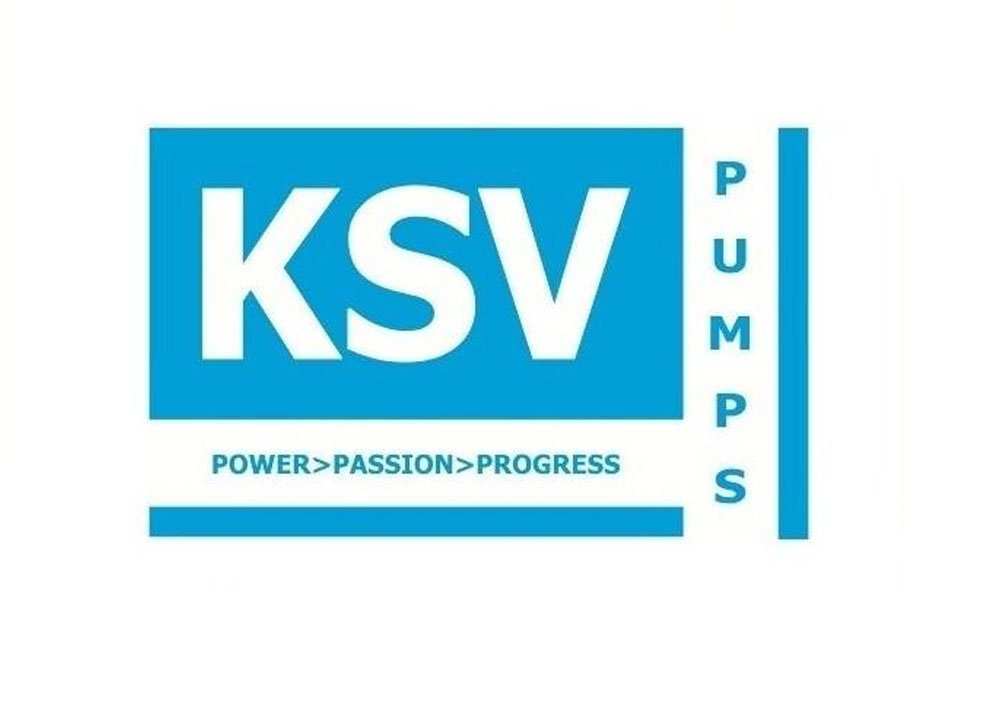With increasing parameters of condensate pumps, primarily in terms of delivery, their dimensions and weight also increase. In order to facilitate layout convenience and reduce footprint, domestic practice employs vertical condensate pumps for thermal power plants with a delivery of 200 m3/h and above, known as KsV Pumps.
Vertical configuration of KsV Pumps not only saves space but also ensures maximum possible support conditions and the most favorable cavitation conditions, as the impeller of the first stage is located at the lowest point of the pump. Additionally, such arrangement allows for the elimination of shaft sealing and external bearing on the suction side, replaced by an internal bearing operating on the pumped liquid.
To achieve acceptable mass and dimensional characteristics of the pumps, KsV type pumps are designed for a relatively high rotational speed compared to other condensate pumps. This necessitated the creation of first stage impellers with high suction capacity. For this purpose, preloaded axial impellers or double-sided inlet impellers are employed for the first stage.
Typically, most domestic vertical condensate pumps feature a two-body construction with a single external sealing joint.
A distinctive feature of pumps of this type is that their assembly and disassembly can be performed without disconnecting the pipelines, and there is also the possibility of rotating the suction nozzle relative to the vertical axis, facilitating the placement of the pump unit.
The main components of the vertical KsV Pumps are made of:
- gray cast iron
- carbon
- alloyed steels.
- Chromium steels( are used for the first stage impellers and preloaded axial impellers)
The primary component of the KsV Pumps is the outer casing, which is a welded structure consisting of two parts: suction and discharge. Inlet and outlet nozzles are welded to the outer casing, positioned horizontally in opposite directions (single-direction option is possible upon customer request). Support brackets with stiffening ribs are also welded to the upper part of the casing, featuring holes for pump transportation. A threaded hole is provided in the suction part of the outer casing for venting steam into the condenser’s airspace during pump startup and operation.
The inner casing (removable part) is a separate assembly unit consisting of the rotor, end seal, thrust bearing, and components: discharge cover, section housings with guide devices, and supply to the first stage. The inner casing components are centered between each other on cylindrical fits and connected by tie bolts. Sealing rings made of heat-resistant rubber are provided at the joints.
Sealing rings of working wheels are installed in the section housings, and interstage sealing rings are installed in the guide devices.
A sliding bearing on the pumped liquid is placed in the supply to the first stage.
The support lantern of the electric motor, seal housing, and thrust bearing are attached to the discharge cover.
Two jacking bolts are provided in the discharge cover for removing the inner casing.
The joint between the discharge cover and the outer casing is sealed with a heat-resistant rubber ring.
The parting joint between the suction and discharge parts is sealed with two heat-resistant rubber rings.
The pump rotor
The pump rotor is a separate assembly unit consisting of a shaft, impellers, preloaded wheel, relief drum, sleeves, sealing elements, and fasteners. To increase the pump’s suction capacity, a preloaded wheel is installed before the impeller of the first stage. The components are installed on the shaft with a sliding fit. All impellers, except for the first stage, have the same flow part. Impellers of the last stage, preloaded wheel, relief drum, and sleeves on the shaft are fixed with keys, while axial locking is ensured with round nuts. A gap is provided between the last stage impeller and the drum, serving as a compensator for temperature expansion when the impellers are heated by the pumped condensate. Special helical grooved sleeves are also installed on the shaft for supplying condensate to the lower bearing and oil to the upper bearing. The assembled pump rotor is dynamically balanced.
The pump designation means: KsV – condensate vertical; 320 – delivery in m3/h; 160 – head in m; 2 – second modification.


